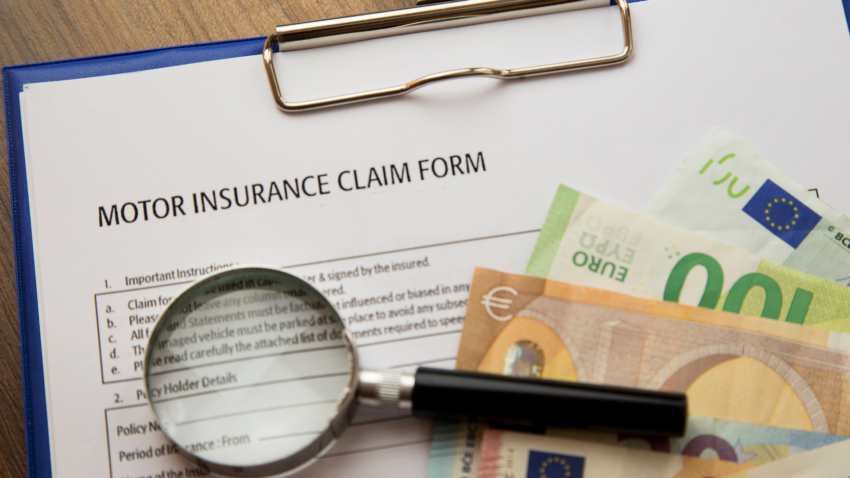Motorcycle insurance is not something that people often think about when they’re getting ready to purchase a motorcycle. With the rising number of injuries and fatalities involving motorcyclists, it’s important to have this conversation sooner rather than later. Do you know the average cost of motorcycle insurance? What should you consider when purchasing a policy? The answers to these questions might surprise you!
What is motorcycle insurance?
Motorcycle insurance covers the costs of injuries or accidents while riding a motorcycle. Motorcycle insurance policies can vary in coverage, price, and deductible. This ensures that you are getting the most comprehensive coverage possible; it is important to research your specific policy before shopping. Some key factors to consider when looking for motorcycle insurance include the following:
- Coverage: Most motorcycle insurance policies offer general liability coverage for passengers and property damage and injury to others. Read the policy carefully to understand what is covered and what is not.
- Price: Prices for motorcycle insurance vary based on several factors, including state licensing requirements, age of the bike, and annual mileage traveled. It is important to shop around and compare rates before choosing a policy.
- Deductible: A motorcycle deductible is an amount you must pay out-of-pocket before your insurer starts paying benefits on claims made by you or your passengers. Make sure to budget appropriately for this expense when choosing a policy.
By understanding these key factors, you can ensure that you are getting the best possible motorcycle insurance plan for your needs.
What to look for in a Motorcycle Insurance
Motorcycle insurance is a type of insurance that covers the cost of damages you or others may cause to others while riding your motorcycle. There are a few things you should always look for when getting motorcycle insurance:
- The coverage you need. Look at what types of protection your policy offers, including property damage, medical expenses, and rider liability.
- Your deductible. This is the amount you have to pay before your policy kicks in and starts paying for damages. You may want to consider raising your deductible if you frequently ride in risky areas or ride a high-value bike.
- Your claim limit. This is the maximum amount your insurance company will pay in a single claim. Make sure this number isn’t too low; if it is, you might not be able to cover costs if something goes wrong on your motorcycle.
- Your policy’s cancellation fee. This fee represents how much you’ll have to pay if you cancel your policy within a certain period (usually 30 days). If you decide to cancel your policy after that window has closed, the company may charge additional fees.
A few Tips for Choosing the Right Motorcycle Insurance Policy
One important thing to consider is the value of your bike. Make sure the insurance company understands its worth and how much coverage it needs.
Another important factor to consider is your riding experience and history. You should get motorcycle insurance that covers you for both liability and property damage, regardless of whether you have ever been involved in an accident before.
You should also know what types of coverage are available through your policy and what is and is not included. Some policies may only cover damage to the bike itself, while others may include coverage for injuries to passengers or pedestrians as well. Apart from these, you should also have enough knowledge about personal injury lawyers and types of personal injury lawsuits. If you find yourself in an accident, these professionals can assist you in filing a lawsuit and navigating the complexities of the claims process.
When it comes to insurance policies, it’s crucial to shop around and compare rates before selecting one. There are many excellent options available, so don’t hesitate to explore multiple policies before making your final decision.
How Much Does Motorcycle Insurance Cost?
Motorcycle insurance is an important investment for any motorcyclist. Costs can vary drastically depending on the state in which you reside, as well as your bike’s make and model.
Start by looking at your state’s minimum liability limits to get a good idea of what to expect. These are the maximum dollar amount you are protected for in case someone is injured while riding with you.
Next, compare rates between different companies to find one that offers the best coverage for your bike and budget. You may also want to factor in rider protection insurance, which covers injuries sustained while not riding your motorcycle.
Finally, always review your policy regularly to ensure it remains up-to-date and covers all risks associated with riding a motorcycle.
Examples of 5 Different Motorcycle Insurance Policies
Looking to buy or renew motorcycle insurance? Here are five types of policies and the things to look for when selecting one.
- Basic Bike Insurance: This policy will only cover you if you’re involved in a crash while riding your bike. It typically doesn’t include liability protection, so make sure you also purchase collision coverage.
- Collision Coverage: This policy covers you and other drivers in a crash, regardless of who was at fault. It may also include property damage coverage, which can help cover damage to your bike after a collision.
- Liability Coverage: This policy will protect you from financial damages if someone is found liable for crashing into you while riding your bike. Make sure the policy includes enough money to cover any claims made against you.
- Uninsured/underinsured motorist protection: If someone hits you and doesn’t have insurance, this policy can help pay for medical bills and lost wages if you’re injured in a crash. Underinsured motorist protection may also help pay for damages not covered by the other two types of coverage.
- Rider Protection: This policy pays for your medical bills and lost wages if you’re injured while riding your bike, regardless of who was at fault.


